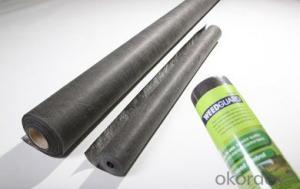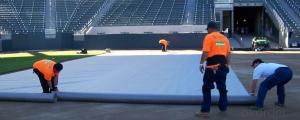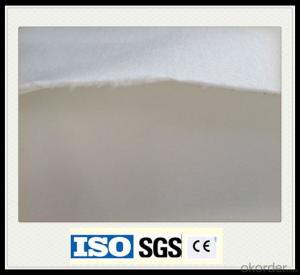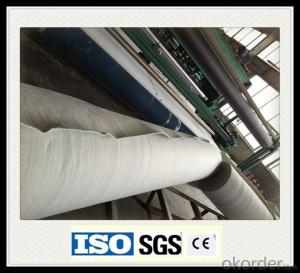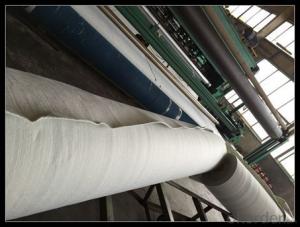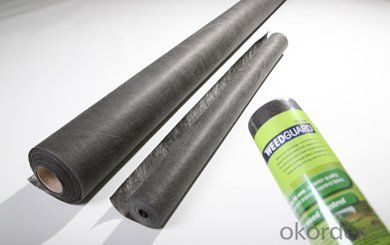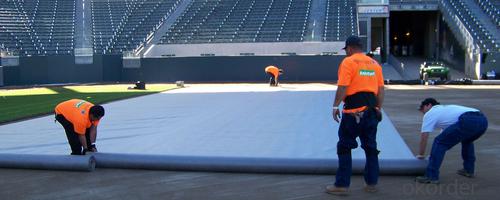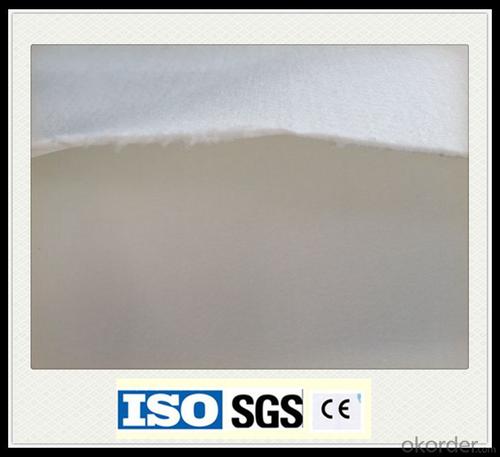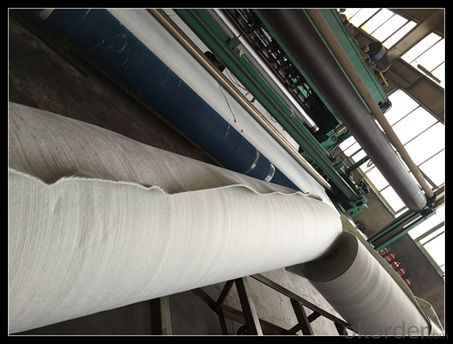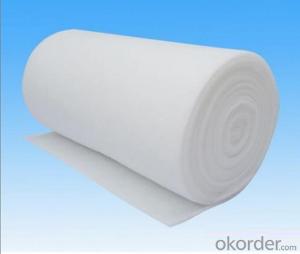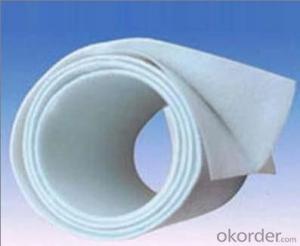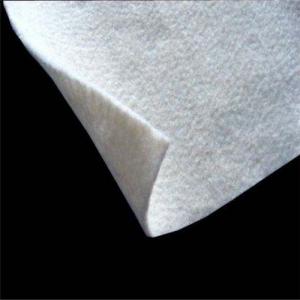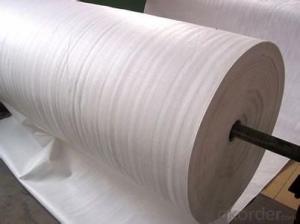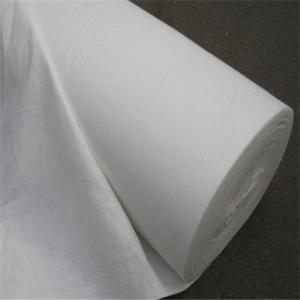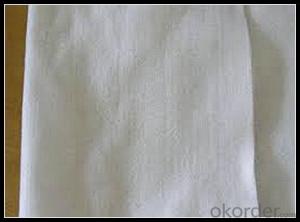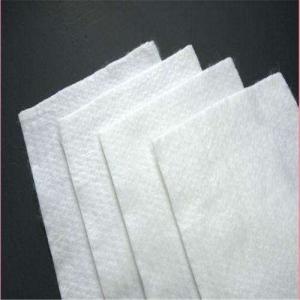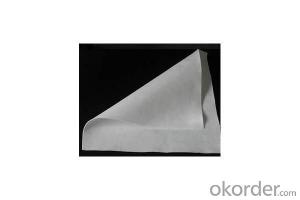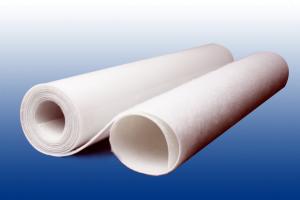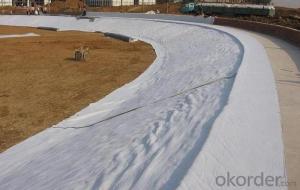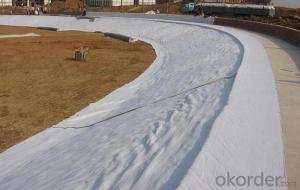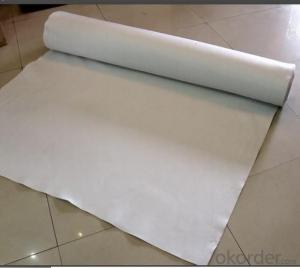Nilex 4551 Non Woven Geotextile Fabric Polypropylene Roll for Road Construction
- Loading Port:
- China main port
- Payment Terms:
- TT OR LC
- Min Order Qty:
- 1000 m²
- Supply Capability:
- 1000000 m²/month
OKorder Service Pledge
OKorder Financial Service
You Might Also Like
Specification
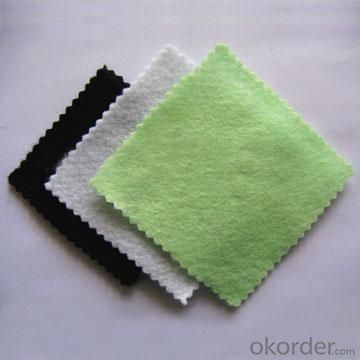
Geotextiles
Divider
Protect the integrity of your gabion basket installation with high-quality geotextiles between your gabion structures and the soil. We supply only the highest quality of both woven and non-woven geotextiles for gabion installations and other applications.
These geotextile filter fabric materials prevent the migration of fine soils to the spaces between rock particles. The migration of fine soil into your gabion structure can cause subsidence problems below or behind the gabion structure in time if not applied correctly and will stir up problems – especially in sandy soils. Clay soils do not generally require a geotextile filter fabric as they seldom leach through the basket section. We recommend using a suitable geotextile where the gabion is in contact with earth, this will limit any movement of soils through a gabion structure. In soft soil foundations especially and wherever overlaps or joins are required, we suggest a minimum overlap of 300mm(1 ft).
We supply geotextile to all sites where gabions are used. Depending on the required structure of the gabion, we normally find that about 1-2m2 of geotextile per m3 of gabion is required
Some of the Geotextile Fabrics we carry are:
Pond Liners
Landfill Liners
Needle punched Non-wovens
Woven Monofilament Fabrics
Soil Stabilization, Reinforcement and Separation products
Non-woven Spun-bonded Landscape Fabrics
Ground Cover Fabric
Inlet Protection Fabric (DOT Spec)
Fuzz-back Fabric
Packaging & Shipping
Packing: PLASTIC FILM INSIDE, AND WOVEN BAG OUTSIDE
Shipping: About 15 days after receipt the deposit
Our Service
Quality assurance
1.On a regular basis or as per your request,we entrust national testing agencies to conduct quality inspections
2. Strictly in accordance with the ISO9001-2008 international quality system standard,we monitor and manage the whole process throughout production,quality testing,and measurement to ensure product quality
3. For quality-related construction delay or substandard construction(except for damage or losses due to customer’s responsibility or irresistible natural disasters),we have refunding,replacement,and repair services.We will respond to customers’ feedbacks on quality issues within 24 hours.
Q: What kind of payments does jenor support?
A: T/T, L/C, Cash are accepted.
Q: Do you charge for the samples?
A: Accordeing to our company policy, the samples are free, we only charge the freight fee. And we will return the freight fee during the next order.
Q: Can you produce according to customers' design?
A: Sure, we are professional manufacturer, OEM and ODM are both welcome.
Q: Do you have other products?
A: Yes, please check the pictures:
geotextile fabric
permeability,filtration,easy for construction
ISO and CE certificate
Good quality and competitive price
- Q: How do geotextiles help in preventing the loss of aggregate in parking lots?
- Geotextiles help in preventing the loss of aggregate in parking lots by acting as a barrier between the aggregate and the underlying soil. This prevents the aggregate from sinking into the soil and being displaced by the weight of vehicles or erosion caused by water runoff. The geotextile material provides stability and reinforcement to the aggregate, helping to maintain its integrity and prolong the lifespan of the parking lot.
- Q: Geomembrane and geotextile difference?
- 1, geotextile, also known as geotextile, it is made of synthetic fiber through acupuncture or woven from the permeability of geosynthetics. Finished cloth for the cloth, the general width of 4-6 meters, the length of 50-100 meters. Geotextile is divided into a woven geotextile and non-woven geotextile. Geotextile has excellent filtration, drainage, isolation, reinforcement, anti-seepage, protection, with light weight, high tensile strength, good permeability, high temperature, anti-freeze, anti-aging, corrosion resistance. 2, geomembrane construction site geomembrane to plastic film as impermeable substrate, and non-woven composite made of soil impermeable material, its impermeability depends mainly on the plastic film impermeability. At present, domestic and foreign anti-seepage application of plastic film, mainly polyvinyl chloride (PVC) and polyethylene (PE), EVA (ethylene / vinyl acetate copolymer), they are a polymer chemical flexible material, the proportion of small, Strong extension, high adaptability to deformation, corrosion resistance, low temperature resistance, good frost resistance. The main mechanism is to plastic film impermeable barrier earth dam leakage channel, with its large tensile strength and elongation to withstand water pressure and adapt to the dam deformation; and non-woven is also a polymer short fiber chemistry Material, through the needle or hot tack forming, with high tensile strength and extensibility, it is combined with the plastic film, not only increased the tensile strength of plastic film and anti-puncture ability, and because the non-woven surface rough , Which increases the friction coefficient of the contact surface, which is favorable to the stability of the composite geomembrane and the protective layer. At the same time, they have good resistance to bacteria and chemical resistance, not afraid of acid, alkali, salt erosion.
- Q: How do geotextiles help with erosion control?
- Geotextiles help with erosion control by providing a protective barrier against soil erosion. They are used to stabilize slopes, reinforce soil, and filter water, preventing the loss of soil particles and maintaining the integrity of the land.
- Q: What are the factors to consider when selecting geotextiles for embankment stabilization?
- When selecting geotextiles for embankment stabilization, several factors should be considered. These include the strength and durability of the geotextile, its ability to withstand environmental conditions such as sunlight exposure and chemical degradation, its filtration and drainage properties, and its compatibility with the soil and other materials used in the embankment. Additionally, factors such as cost, installation requirements, and the specific project requirements and goals should also be taken into account.
- Q: Geotextile belongs to what industry
- Geotextile, also known as geotextile, it is made of synthetic fiber through acupuncture or woven from the permeability of geosynthetics. Geotextile is a new material geosynthetics which one, the finished product for the cloth, the general width of 4-6 meters, the length of 50-100 meters. Geotextile is divided into a spinning geotextile and non-woven filament geotextile. Geotextile manufacturers, for your answer
- Q: In the cofferdam construction process, geotextile materials after entering the need to arrange sampling test? Is there a specification? If the arrangements for testing, is to do physical experiments, or do chemical experiments, or do? More
- On the use of geotextile material, depending on whether the design requirements on the use of drawings, if required to use the method must be taken in the sampling inspection, the most commonly used two geotextiles GB / T-2008 is filament spunbond acupuncture Non-woven geotextile, GB / T-1998 is staple acupuncture non-woven geotextile, the general arrangements for testing are to do physical and mechanical properties (dynamic perforation, per unit area of quality, thickness, wide strip stretch, trapezoidal tear) other indicators Not mandatory
- Q: How do geotextiles compare to traditional construction materials?
- Geotextiles are an innovative alternative to traditional construction materials. Unlike traditional materials such as concrete or asphalt, geotextiles offer numerous advantages. They are lightweight, easy to install, and highly flexible, allowing for efficient and cost-effective construction. Geotextiles also provide excellent erosion control, soil stabilization, and drainage capabilities. Furthermore, they are environmentally friendly, as they allow for natural filtration and groundwater recharge. Overall, geotextiles surpass traditional construction materials in terms of versatility, durability, and sustainability.
- Q: With sand and gravel, geotextile do blind ditch how to construction
- Geotextile wrapped sand and gravel, play a role in filtering drainage, the equivalent of the use of blind ditch, Ji child irrigation twisted thieves ghost Creek Handan Huaxu geotextile material manufacturers
- Q: What are the limitations of using geotextiles?
- Some limitations of using geotextiles include their susceptibility to clogging, reduced effectiveness in high-flow conditions, potential for damage during installation or handling, limited ability to withstand heavy loads, and relatively short lifespan compared to other geosynthetic materials. Additionally, geotextiles may not be suitable for all soil types or environmental conditions, and their performance can vary depending on factors such as installation technique and maintenance.
- Q: What are the different geotextile installation techniques in erosion control?
- Some of the different geotextile installation techniques in erosion control include slope stabilization, sediment control, and shoreline protection. These techniques involve placing geotextile materials in strategic locations to prevent soil erosion, retain sediments, and protect vulnerable areas from wave action.
Send your message to us
Nilex 4551 Non Woven Geotextile Fabric Polypropylene Roll for Road Construction
- Loading Port:
- China main port
- Payment Terms:
- TT OR LC
- Min Order Qty:
- 1000 m²
- Supply Capability:
- 1000000 m²/month
OKorder Service Pledge
OKorder Financial Service
Similar products
Hot products
Hot Searches
Related keywords
